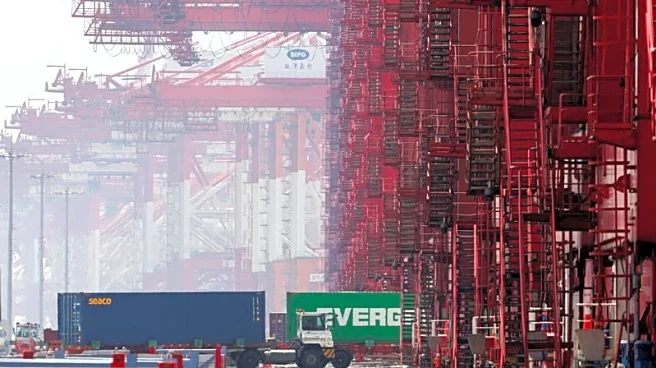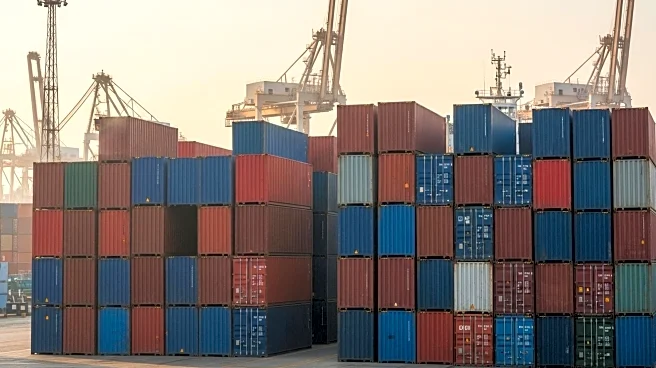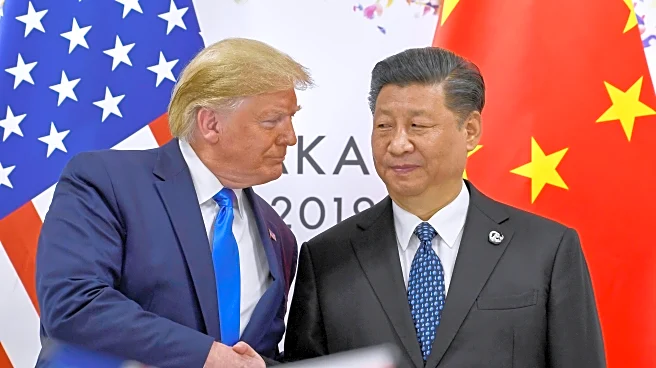What is the story about?
What's Happening?
China's exports to the United States fell by 27% in September compared to the previous year, marking the sixth consecutive month of decline. Despite this, China's global exports increased by 8.3%, reaching $328.5 billion, surpassing economists' expectations. This growth was significantly better than the 4.4% increase recorded in August. Imports also showed improvement, growing by 7.4% last month, compared to a 1.3% increase in August. However, China's domestic economy faces challenges due to a downturn in the real estate sector, affecting demand and consumption. The trade relationship between China and the U.S. remains strained, with new tariffs and retaliatory measures being implemented by both sides.
Why It's Important?
The decline in exports to the U.S. highlights the ongoing trade tensions between the two countries, exacerbated by President Trump's policies aimed at encouraging manufacturers to relocate to America. This situation has prompted China to diversify its export markets, with significant growth in shipments to Southeast Asia, Latin America, and Africa. The trade friction poses risks to global supply chains, particularly if export controls escalate. The tensions could also impact diplomatic relations, as plans for a meeting between President Trump and Chinese President Xi Jinping are jeopardized. The broader implications for global trade and economic stability are significant, as these two major economies continue to navigate complex trade dynamics.
What's Next?
The ongoing trade tensions suggest potential further retaliatory measures, including additional tariffs and export controls. These developments could lead to prolonged impacts on global supply chains and economic relations. The possibility of a meeting between President Trump and President Xi Jinping remains uncertain, with the lack of progress in trade negotiations casting doubt on future agreements. Stakeholders in both countries, including businesses and policymakers, will need to closely monitor these developments and adapt strategies accordingly to mitigate risks and explore new market opportunities.
Beyond the Headlines
The trade tensions between China and the U.S. could have long-term implications for global economic structures, potentially leading to shifts in trade alliances and supply chain strategies. The focus on diversifying export markets may drive China to strengthen economic ties with emerging regions, altering traditional trade patterns. Additionally, the emphasis on export controls and tariffs highlights the geopolitical dimensions of trade, where economic policies are increasingly intertwined with national security considerations.
AI Generated Content
Do you find this article useful?













